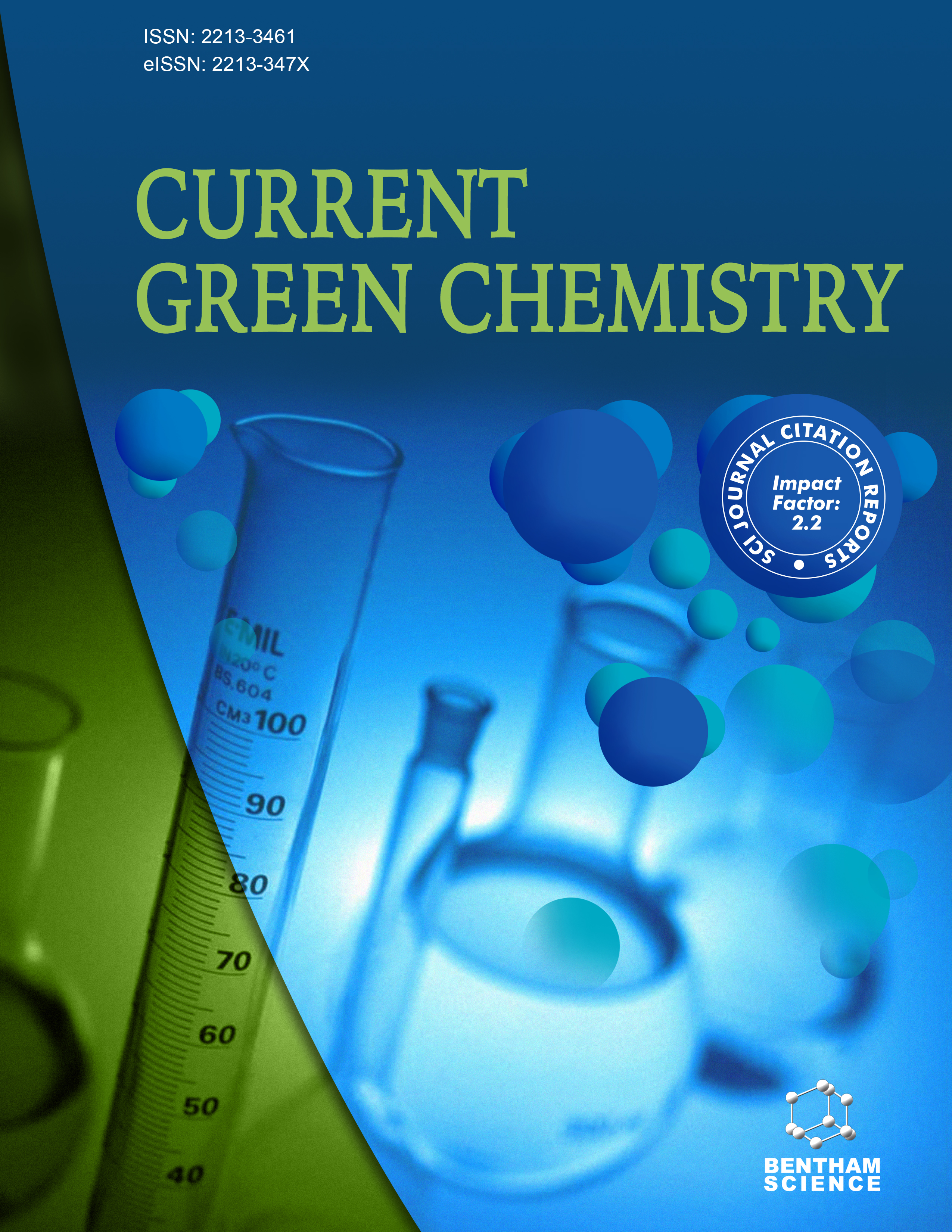- Home
- A-Z Publications
- Current Green Chemistry
- Previous Issues
- Volume 2, Issue 1, 2015
Current Green Chemistry - Volume 2, Issue 1, 2015
Volume 2, Issue 1, 2015
-
-
Hydrogen Bond Donor-promoted Fixation of CO2 with Epoxides into Cyclic Carbonates: Moving Forward
More LessBy Jinquan WangCarbon dioxide (CO2) is not only an easily available, renewable carbon resource, but also an environmentally friendly chemical reagent. Fixation of CO2 with epoxides into cyclic carbonates (CC) is one of the most promising methodologies in this area. Recently, increasing attentions have paid to the utilization of environmentally benign hydrogen bond donors as the co-catalysts, and it is clear that hydrogen bond donors remarkabl Read More
-
-
-
Metal-promoted Carboxylation of Alkynes/allenes with Carbon Dioxide
More LessAuthors: Chun-Xiang Guo, Bing Yu, Ran Ma and Liang-Nian HeCarbon dioxide is generally known as one of the main greenhouse gasses which have caused a series of environmental problems. On the other hand, CO2 can also be regard as an abundant, nontoxic, renewable and economical C1-synthon in organic synthesis. Chemical utilization of CO2 has attracted more and more attentions all over the world and has been studied extensively and intensely for decades. Meanwhile, acryl Read More
-
-
-
Merrifield Resin-supported Functionalized Amino Acids as Efficient Catalysts for the Cycloaddition of Carbon Dioxide with Epoxides
More LessAuthors: Seon-Myung Lee, Moon-Il Kim, Dong-Woo Kim, Roshith Roshan and Dae-Won ParkVarious amino acids were covalently grafted onto DVB cross-linked polystyrene resin (Merrifield resin, PS) and functionalized with alkyl halides of different alkyl chain lengths and counter-anions. The catalysts were characterized by elemental analysis (EA), FT-IR, TGA, XPS, and SEM. The catalysts exhibited good reactivity in the cycloaddition of alkyl glycidyl ether (AGE) and CO2. The effects of the alkyl-halide structure, rea Read More
-
-
-
Zn-EDTA Complexes As Easy-to-handle and Stable Heterogeneous Catalysts for Cycloaddition of Carbon Dioxide to Epoxides
More LessAuthors: Dong-Hui Lan, Chak-Tong Au and Shuang-Feng YinBi-functional Zn-EDTA complexes that are non-toxic and stable can be conveniently synthesized using water as solvent. The complexes are efficient heterogeneous catalysts for the synthesis of cyclic carbonates from CO2 and epoxides without the need of a co-catalyst or solvent. Among the complexes, ZnBr2- EDTA-2Na is the most effective, showing a turnover frequency of 96.9 h-1 (cat./PO = 0.25 mol%, 150 °C, 2.25 MPa, 4 Read More
-
-
-
Supported Catalysis in Carbon Dioxide Activation
More LessAuthors: Andre A. L. Goncalves, Ana C. Fonseca, Jorge F. J. Coelho and Armenio C. SerraThe use of carbon dioxide as a raw profitable material involves its integration in a chemical process using as mild reaction conditions as possible, which necessarily requires the use of a catalytic process. The incorporation of CO2 in cyclic carbonates by condensation with epoxides is a suitable process for that purpose. If a large scale process is the pursued objective, homogeneous catalysts proposed must be transformed in het Read More
-
-
-
Flow and Microwave Assisted Synthesis of Medicinally Relevant Indoles
More LessAuthors: Nadeesha Ranasinghe and Graham B. JonesThe indole ring is one of the most abundant heterocyclic scaffolds found in nature. It is built into the essential amino acid tryptophan in which the arene component of the indole facilitates π-π interactions, and the N-H group serving as a hydrogen bond donor to proximal proteinogenic species. Accordingly, the indole sub-structure forms an essential component of the framework of higher order protein structures. Although myria Read More
-
-
-
Electrochemical Methodologies for the Carboxylation Reactions in Organic Synthesis. An Alternative Re-use of Carbon Dioxide
More LessBy Leucio RossiToday, the need to control carbon dioxide production and emission has become an important target for both scientific and industrial world. To this purpose, the use of carbon dioxide as raw material and building block for the synthesis of complex molecules represents an efficient tool to its recycle and re-use. A great effort has been made in order to reconvert carbon dioxide to valuable organic compounds and utilize it as a Read More
-
-
-
Catalytic Biomass Processing: Prospects in Future Biorefineries
More LessBy Rafael LuqueBiomass can efficiently replace petroleum in the production of fuels for the transportation sector. One effective strategy for the processing of complex biomass feedstocks involves previous conversion into simpler compounds (platform molecules) which are more easily transformed in subsequent upgrading reactions. This contribution is aimed to provide a short overview on biomass characteristics and processing chem Read More
-
Most Read This Month
Article
content/journals/cgc
Journal
10
5
false
en


